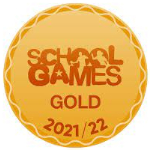Top Tips for supporting your child at home with Reading
At Herne, children will learn to read with confidence, fluency and understanding, providing them with the skills required to achieve a lifetime of enjoyment through reading. Children read in school independently, with peers and as a shared class session. They listen to adults and other children read, taking part in paired reading and discussions with their peers
Our home reading books are organised into coloured book bands and include books from both a range of schemes, such as and including Oxford Reading Tree, Rigby Star Readers, Collins Big Cat, Floppy Phonics, Pearsons Bug Club and as well as ‘real’ books. Through both scheme books and ‘real’ (non-scheme) books, children are taught key comprehension skills using the VIPERS approach:
Vocabulary |
Find and explain the meaning of words in context. |
Infer |
Make and justify interpretations about characters and events using evidence from the text. |
Predict |
Predict what might happen from the details given and implied in a text. |
Explain |
Explain preferences, thoughts and opinions about a text. Identify/explain how information/narrative content is related and contributes to the meaning as a whole. Identify/explain how meaning is enhanced through choice of words and phrases. Make comparisons within the text. |
Retrieve |
Retrieve and record key information/details from fiction and non-fiction texts. |
|
Summarise (KS2) |
Summarise main ideas from more than one paragraph |
Children are assessed regularly and move onto the next book band when their fluency and comprehension show that they are ready.
How you can help your child with reading at home:
Daily reading practise will help develop children’s decoding and comprehension skills although it is not expected that they will read a whole book every night. Children may only read 3 or 4 pages of their book but will spend longer discussing their understanding of what they have read in order to progress in developing their comprehension skills.
We would encourage children to read a variety of texts on a regular basis, even taking the opportunities to note and read texts in their environment such as road signs, leaflets, information posters, newspapers etc. Please feel free to share these reading experiences in their home reading record and encourage them to share their opinions about the texts they have read.
TOP TIPS FOR READING WITH YOUR CHILD
1) CHOOSE A QUIET TIME
Set aside a quiet time with no distractions. 10 to 15 minutes is usually long enough.
2) MAKE READING ENJOYABLE
Make reading an enjoyable experience. Sit with your child. Try not to pressurise if he or she is reluctant. If your child loses interest then do something else.
3) MAINTAIN THE FLOW
If your child mispronounces a word do not interrupt immediately. Allow your child to self-correct using their phonics skills. You can always discuss mispronounced words at the end of your reading time.
4) SUCCESS IS THE KEY
Until your child has built up his or her confidence, it is better to keep to easier books. Struggling with a book with many unknown words is pointless because the flow is lost, the text cannot be understood, and children can easily become reluctant readers.
5) VISIT THE LIBRARY
Encourage your child to use the public library regularly. Remember our school library is open after school on a Friday.
6) REGULAR PRACTICE
Try to read with your child every day. Little and often is best.
7) COMMUNICATE WITH THE SCHOOL
Your child has a reading record book. Try to communicate regularly with positive comments and any concerns. Your child will then know that you are interested in their progress and that you value reading. We would love to hear the children’s opinions of the texts they read and their progress.
8) TALK ABOUT THE BOOKS
There is more to being a good reader than just being able to read the words accurately. Being able to understand what has been read is just as important. Always talk to your child about the book; about the pictures, the characters, how they think the story will end, their favourite part. You will then be able to see how well they have understood and you will help them to develop good comprehension
skills.
9) VARIETY IS IMPORTANT
Remember that children need to experience a variety of reading materials eg. picture books, hardbacks, comics, magazines, poems, recipes, instructions and information books.
Below, please find some question stems, in the VIPERS style we use in school, that you can use to question your child when reading together at home.
Vocabulary |
• What do the words ...... and …… suggest about the character, setting and mood? • Which word tells you that….? • Which keyword tells you about the character/setting/mood? • Find one word in the text which means…… • Find and highlight the word that is closest in meaning to……. • Find a word or phrase which shows/suggests that……. |
Infer |
• Find and copy a group of words which show that… • How do these words make the reader feel? How does this paragraph suggest this? • How do the descriptions of …… show that they are …….. • How can you tell that…… • What impression of …… do you get from these paragraphs? • What voice might these characters use? • What was …. thinking when….. • Who is telling the story? |
Predict |
• From the cover what do you think this text is going to be about? • What is happening now? What happened before this? What will happen after? • What does this paragraph suggest will happen next? What makes you think this? • Do you think the choice of setting will influence how the plot develops? • Do you think… will happen? Yes, no or maybe? Explain your answer using evidence from the text. |
Explain |
• Why is the text arranged in this way? • What structures has the author used? • What is the purpose of this text feature? • Is the use of ….. effective? • The mood of the character changes throughout the text. Find and copy the phrases which show this. • What is the author’s point of view? • What affect does ….. have on the audience? • How does the author engage the reader here? • Which words and phrases did ….. effectively? • Which section was the most interesting/exciting part? • How are these sections linked? |
Retrieve |
• How would you describe this story/text? What genre is it? How do you know? • How did…? • How often…? • Who had…? Who is…? Who did….? • What happened to…? • What does…. do? • How ….. is ……..? • What can you learn from …… from this section? • Give one example of…… • The story is told from whose perspective? |
Summarise (KS2) |
• Can you number these events 1-5 in the order that they happened? • What happened after …….? • What was the first thing that happened in the story? • Can you summarise in a sentence the opening/middle/end of the story? • In what order do these chapter headings come in the story? |








